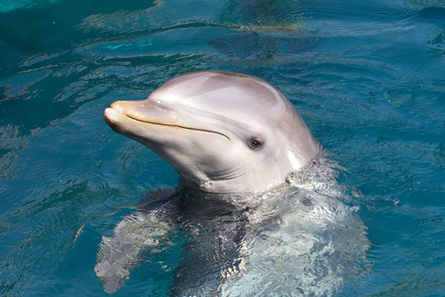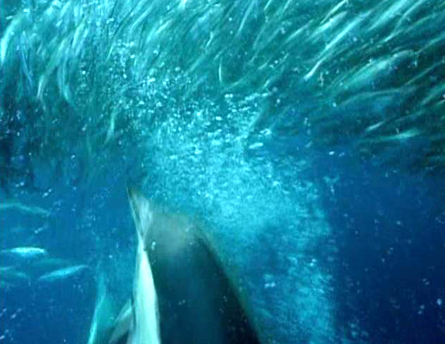Dolphins could teach humans a thing or two about finding Nemo. The aquatic mammals may pinpoint prey hidden in bubbles by using mental math.
By adjusting the volume of sonar clicks, then processing the incoming echoes, dolphins might have solved a problem that still stymies man-made sonar: how to peer through frothy water. Using clicks that mimic an Atlantic bottlenose dolphin, scientists devised a system that weeds out sound clutter from underwater bubbles.
“It’s really ingenious, actually,” says oceanographer Grant Deane of the Scripps Institution of Oceanography in La Jolla, Calif. “I think it’s very clever work, and there are a number of significant applications for it.”
Using something like a fireman’s hose, researchers shot bubbles into a huge water tank set underground. The bubbles cloaked a submerged target: a steel ball slightly smaller than a baseball. Then, the researchers sent out short bursts of sound — the faux dolphin clicks — underwater, collected the echoes, and processed the data mathematically to figure out the steel ball’s location.
It worked “brilliantly,” says physicist and engineer Timothy Leighton who led the study, published online July 12 in the Proceedings of the Royal Society A.
The findings could improve man-made sonar, allowing mine-hunting submarines to see more clearly in murky shallow waters.
Normally, using sonar to locate targets in bubbly water is a bit like driving a car at night in thick fog, says Leighton, of the University of Southampton in England. Switching on the headlights doesn’t improve the driver’s vision; fog droplets just scatter the light.
Similarly, bubbles scatter sound. But the sound they reflect gets a sonic boost: Bubbles kick back sonar signals perhaps a million times more powerfully than equally sized steel balls in water, Leighton says. This peppy bounce back makes it tricky for sonar to look through foamy waters.
But scientists have observed dolphins blowing bubble nets — dense clouds of tiny bubbles — while hunting schools of fish.
“It seemed strange,” says Leighton. “Either dolphins are blinding their best sensory apparatus, or they’re doing something we can’t.” Compared to the best sonar technology, a dolphin’s hardware is less powerful. But dolphins still outperform their man-made counterparts.


The researchers used nonlinear mathematics to process the dolphins’ sonar returns. This type of calculation exploits the energetic echoes of the bubbles, which unlike those from steel balls or fish, bounce back sound as the square of the pulse that hits them.
“I don’t think dolphins are sitting there playing with numbers in their heads,” he says, but their brains might be using mathematics to decipher bubble-scattered sonar signals.
There’s a chance dolphins aren’t underwater mathletes, but the research team isn’t trying to prove the animals use this method of sonar processing, says engineer Hugh Griffiths from University College London in England. The researchers are asking whether or not it’s feasible, he says. “And they conclude — quite rightly — that yes, in principle, it is.”






